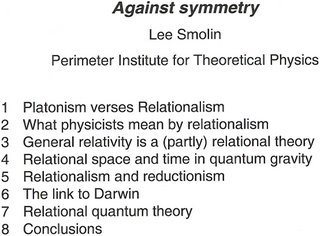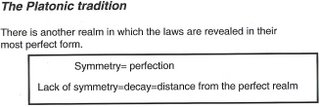You all have to know the hammer analogy was made aware to me about a week before this debate took place. Also, a YouTube label given to this demonstration was posted under "gaming" so I find that kind of funny given the seriousness of this debate.
I pushed Number 1. But, you also know my bias right so I did not think providing this image would hurt in an way given that you already have some insight into my perspective? My opinion at
Sean's Blog as well pertaining to this subject.
So as I am going through the debate I thought it necessary to keep a running tab for my self so as to see from what position one is speaking. So now that I know Sean is speaking from a
Naturalist point of view. I will continue.
A metaphysics that goes beyond the commitments of science is simply unsupported by the best available evidence.[27]
—Lynne Rudder Baker, Naturalism and the First-Person Perspective
A naturalistic methodology (sometimes called an "inductive theory of
science") has its value, no doubt.... I reject the naturalistic view: It
is uncritical. Its upholders fail to notice that whenever they believe
to have discovered a fact, they have only proposed a convention. Hence
the convention is liable to turn into a dogma. This criticism of the
naturalistic view applies not only to its criterion of meaning, but also
to its idea of science, and consequently to its idea of empirical
method.
Okay I am at 36:58 of the video so I have had the opportunity to listen to the four speakers. I have to say oh my gosh, there is a lot here to consider, and a lot I have already considered. So I need to respond to that first part of the video.
As life calls us to do our things in the day to day, I also have a schedule today, so this posting will be broken up in terms of my response as to the first part of the video. Please be patient. It also gives me time to think about what has been said.
I want to open with the quote Sean responded too, of Eben Alexanders of Einstein. So give me time to drawn this comment out of Eben's book.
A man should look for what is, and not for what he thinks should be. -Albert Einstein (1879-1955)
I am still ay 36:58 so I needed to finish what what I have surmised in that first part so I can go on with the video. Below is something that I had written to my Aunt, so hope she is okay with me repeating it here. You will see that entry below. It basically sums up the first part of the debate for me.
As I was finishing listening to Steven Novella speak, the quote of Einstein, now gotten from Eben's book, Proof of Heaven under Prologue, and response given by Sean Carroll was a matter of fact to the whole first part to me as it was for Sean to Eben's Alexanders use of the quote.
Something also interesting to me was Sean's admittance of wanting to believe (that death is not final) but at this point not being able too.That said a lot to me, and in the aspect of being a scientist, I believe what he is saying.:) So I will continue on with the rest of the video now.
***
In a note to my Aunt.
Hi Aunt Celine,
I am a bit of a science buff when it comes to what is currently happening in science. I too had been reading about the NDE for quite a long time as well. Moody agrees with you, about science not quite ready. Since I have studied other aspects of consciousness research, it is my hope that one day we will understand this debate, as a recognition of who we all are as spiritual beings, in a physical body.
What Moody proposes is the beginning of a true dialogue based on logic and reason, and these stem from philosophy. So it is important to see the discussion in terms of where this dialogue can truly begin. Moody mentions pseudoscience and from that, his journey through philosophy. He is trying to set up a credible debate.
I read Eben Alexander's book as well so I knew where he was coming from, as well I have been following Sean Carroll's science for sometime now. The only one that was sort of new to me was that Steve Novella, and as a neuroscientist, I am open to what he has to say.
I must say then I am also a bit of philosopher that has had me venturing through aspect and developments about the Mind/ body debate that is going on, and that is where the science is saying that it is based on materialism. On my own, I have studied Plato and other philosophers.
In order to accept materialism one has to believe, that consciousness is derived from the brain, while the other perspective is that the brain in my view, is what consciousness uses while the body is alive, but that consciousness can exist, once our body dies. That understanding is in contradiction to what science saids today, but I am saying to science, that they indeed do not have all the facts to make this conclusion even though they can simulate experience from manipulating the physical aspects of the body to produce the near death experience.
Religion has not helped me and I must say, that my upbringing within the Catholic Church has left much for me say, about its patriarchal construct, and how it falls short of providing support for what spiritual means to me. I hope you are not offended.
I do believe in a higher power, and I do believe that Heaven is capable in all of us now. In my education, I might of called it Symmetry, in the very beginning, and science has something to say about that. While I have a real study in reductionism, the work that has been going on, I believe eventually it will lead to an understanding within science, but it has to be developed, and in my view Moody's philosophical standpoint, is where we will start.
***
So I finished the rest of the video last night. There were somethings that were quite memorable to me that stood out.I wanted to quickly move to the end of the debate where each had an opportunity as they did in the beginning to give their last assessment as to why Death is Final, or not.
I was more focused on Sean's response and reiteration of respect for people and their beliefs. This was important to me. When Moody spoke of the work that he had been doing for the last forty years with regard to NDEs and the listening to people about these experiences, these were genuine stories of, "Death was not Final" for Moody. I was encouraged by the votes last night, not for which side supposedly won, but by the uncertainty(final 12%) as to the question of what remains as a definitive, as to Death is Final. These shows to me that people in the end still do not know, and that, they could not be decisive. This to me, leaves room for work to be done.
I also liked Sean Carroll's response too, the responsibility of acceptance as to how one may look at life given the perspective of responsibility he has having accepted his position on Death is Final. Of course he might used, when he was a child, as one might use as Moody did, as was his thrust to understand astronomy.
I believe this to be sincere, and such a question about death that would come to all in the child's mind, a determiner of what the future would bring for him as he sat on that panel. Not so much as a Skeptic full blooded, so as to be glib with the response of, as if Steve Novella was the amazing Randi and waited for the bet that has not been collected. :) But to remain open, as the undecided results spoke toward, as if, more information would be needed to make a final definitive statement.
So anyway, another moment stood out in regard to Sean Carroll's response to a woman about where the energy goes once we die. His analogy of a flame going out was like the hammer statement used above, as used in the repertoire of such a question about energy and death. What I liked about the response, was as to where it put the woman in mind. If you have ever come to the point of a logical constructive immobilizing one's position, as it was on the face this woman wore, as to where the woman could go next. That final deductive state is an important one to me.
I have much more to say about reductionism and how that research is important to me as if the table would be permanent as the atom that make it up, would be a table ad infinitive. So as sure as, matter in all it's constitutions have been described, as to say I am pointing right a it?:) We are not objects like the table. The analogy of the narrative is always important as it is spoken, and as subjective and alone as it might seem there is the greater picture of the story of the NDEr.
I must say too, that the idea of reductionism as much as materialism, causes flinches in those who speak about spiritual things, would make one from that side speak about what is not reducible? Since energy is an important topic and how we use configuration space to surmise it's existence, it becomes a classification of matter. I would assume there is much still to be ascertained. I read the blogs of other scientists who are at the front with questions phenomenologically expressed that want to see where the science goes next. Just as we have been taken t the limits of where the identification of the Higg's operates and what that energy range is.


.png)



















